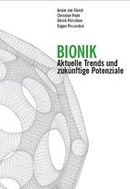Bionics. Current trends and future potential
The “technical” achievements and solutions developed by organisms are often exemplary. They are mostly resource-efficient, ingenious, ecologically adapted and error-tolerant, i.e. with a tendency to sustainability. But admiration for bionics appears to be greater than its real successes. It is always the same success stories that are quoted (Velcro fastener, the form of an aircraft wing, honeycomb structures in lightweight construction, lotus effect etc.). “Learning from nature”, in the sense of implementing the numerous models found in nature into industrial technologies, encounters massive problems. These are problems which typically occur during innovation processes (path dependencies), yet also problems specific to bionics (dealing with complexity, especially with regard to systems architecture, materials and production technologies). Bionics is currently on the verge of a technological leap forward which, as so often in such cases, opens up new opportunities whilst also entailing new risks.
On the one hand, technological limits are being reached in some areas and it is increasingly a question of dealing with complexity. Bionic approaches offer orientation here, e.g. in the field of information and communications technology but also industrial ecology and management bionics.
On the other hand, developments e.g. in molecular biology and nanotechnologies are making major contributions towards overcoming restrictions in the technical implementation of “biological solutions”. Current development work on the manufacture of artificial spider silk, artificial mother of pearl, artificial bone and tooth material are opening up the prospect of highly complex hierarchical structures simply “being grown” in future.
This study explores the trends, the short- and long-term perspectives, the strengths and weaknesses of existing bionics networks and the current drivers and inhibitors of bionic innovation as well as sketching out approaches for resolving their successful development implementation.



